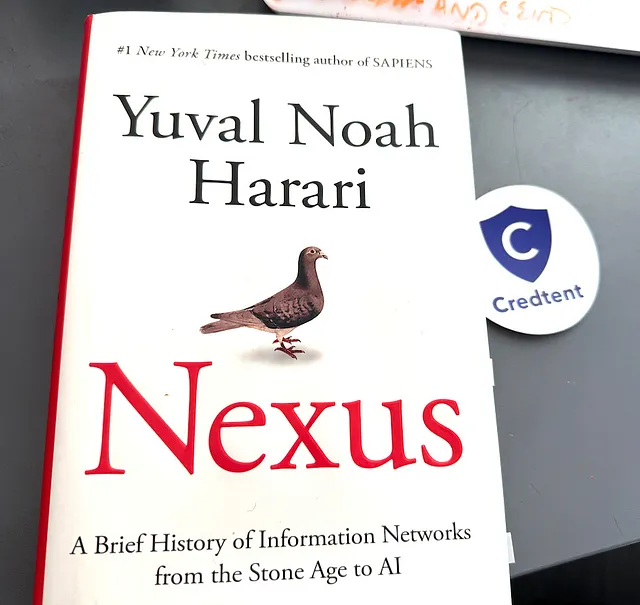The Naive View of Engagement Why More Isn’t Better
Highlights
- More engagement is not always better
- AI-generated responses on platforms like LinkedIn can come off as superficial and ineffective
- Authenticity and meaningful connections are more important than volume of engagement
- The challenge is to encourage genuine dialogue with the help of technology, including AI
- Choosing depth over noise in interactions is key to fostering real relationships
In Yuval Noah Harari’s recent book, Nexus, he takes on what he calls the ‘naive view of information’ — the belief that more information is automatically better. Harari explains that when there’s too much information, low-quality content tends to rise to the top because it’s ‘light’ and easy to create. Thoughtful, truthful work is harder, more time-consuming, and therefore often gets buried beneath layers of superficial content. This insight got me thinking about engagement, especially in our increasingly AI-driven online interactions.

© 2024 from Nexus by Yuval Noah Harari
The Fallacy of More Engagement
The ‘naive view of engagement’ mirrors this same fallacy. We tend to assume that more engagement is always better. These are literally metrics most marketers count because what else are they supposed to count to show their work means something? More comments, more likes, more responses must mean deeper conversations and better relationships, right? But just as Harari warns about the pitfalls of low-quality content, it’s time to recognize that not all engagement is meaningful or useful. More can actually even be harmful.
LinkedIn and the Illusion of Connection
Consider LinkedIn and how it’s changed with generative AI now embedded into its comments section, for example. The platform’s increasingly pervasive use of AI-generated responses is supposed to encourage conversation.
Yet, instead of sparking genuine dialogue, these responses often come off as superficial — a series of generic comments that barely acknowledge the content they supposedly engage with. “Great post, what are your thoughts on this topic?” Or “Thanks for sharing, very insightful!” We’ve all seen these, and they are as bland as they are ubiquitous.
Inevitably, many salespeople use these tools to get the attention of influential people who post. But it doesn’t work — if I see one of those posts, I wonder what the poster imagined I’d do. Based on this as my first impression, I’m less likely to engage with their company. This might be an AI-enabled lifehack, but it’s an ineffective one.
Authenticity Over Automation
When AI is used to generate engagement without depth, it misses the point of social media: Authentic connections. When LinkedIn was launched in 2003, its initial mission was to help professionals build and maintain a network of trusted contacts. LinkedIn’s AI-generated suggestions and reactions might increase metrics like comment counts and engagement rates, but these vanity metrics are a poor substitute for real engagement.
These AI responses don’t foster relationships, won’t expand your network with valuable connections, and certainly don’t encourage the kind of nuanced conversation that professional platforms like LinkedIn aspire to host. It’s just more AI slop filling up comment space.
True engagement isn’t about volume — it’s about relevance, authenticity, and connection. When people can tell that a comment has been auto generated, it often has the opposite effect of what’s intended: Rather than feeling invited into a conversation, do we feel dismissed? Real relationships can’t be formed through rote, uninspired prompts that barely skim the surface of a topic. Even an authentic ‘congratulations’ or ‘a great read’ is likely to get you more goodwill than these bogus mystery meat comments that you click to add.

Reading this amazing book a second time later this month.
The Path Forward: Synergy with AI
The challenge, then, isn’t to just boost engagement numbers, but to encourage meaningful, human-centered interactions. It means resisting the urge to fill our feeds with empty comments and instead focusing on how to use technology — including AI — in ways that enhance genuine dialogue.
Generative AI pioneer Dr. Maya Ackerman talks about the range between the synergy of collaborative creativity with AI and the slacking of just letting a language model write everything for you. If you err on the side of synergy, that means putting your personality and thoughts into an AI-inspired response rather than just letting the chatbot spit out something generic with an appearance of engagement that adds nothing to the conversation.
As with Harari’s comments about why truth is ‘heavier’ than fake news, authentic communication takes more time to produce, but it will resonate in a way that generic AI responses never will. I’d venture that the more you put in valuable time for a response, the better chance you have of getting the attention of the original poster and the audience they have cultivated with their content.
Perhaps the naive view of engagement will fall out of favor, just as Harari argues the naive view of information should. And, the path forward in this stage of AI assists embedded everywhere? It starts with us making an effort — with choosing depth over noise.
Yuval Noah Harari
Nexus
Misinformation
Misinformation, Disinformation and Mal-information